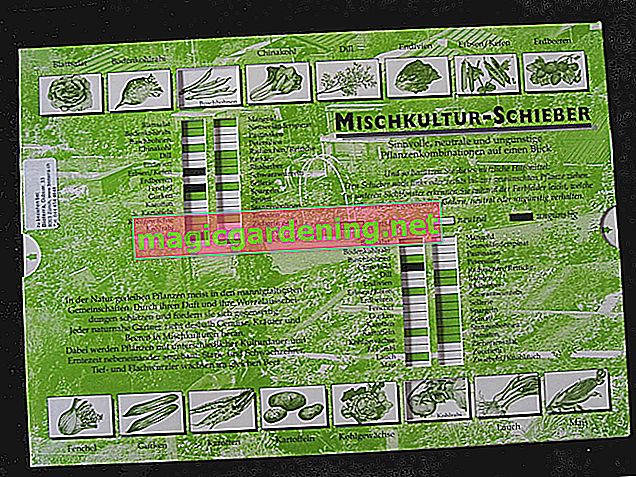
Crop rotation
The gardener understands two things by the term “crop rotation”: On the one hand, no plants from the same growing group (e.g. root vegetables, cucurbits, nightshade plants, legumes) and from the same plant family are grown every three to four years. Since these are often attacked by the same pests, the resourceful gardener tricked the animals with a crop rotation: They then have no chance of reproducing further in the next year and attacking the plants in even greater numbers. Secondly, “crop rotation” also means that the plants, divided according to their nutrient requirements into high, medium and low consumers, are grown one after the other on a bed every three to four years.
also read
- The clear planting calendar for the raised bed
- The best plants for the raised bed
- Horse manure - an excellent fertilizer for raised beds
Example of a crop rotation in a raised bed
An example of good crop rotation on a compost raised bed:
1st year (heavy consumers): zucchini, tomatoes, endive
2nd year (middle eaters): Kohlrabi (middle), framed by lettuce, lettuce and lamb's lettuce, as well as carrots, onions, parsnips and strawberries
3rd year (weak eaters): French beans (middle), summer purslane, lamb's lettuce, carrots, radishes, culinary herbs (parsley, chives ...)
Mixed culture
With a mixed culture, you mix plants from different plant families with each other so that the space in the raised bed is optimally used. The optimal use is firstly a temporal one, in that you start sowing or planting early and sow or plant harvested areas again. Second, it is spatial if you combine the plants so that you can plant them as densely as possible. For this purpose, the plants should complement each other well above and below ground: In addition to narrow deep-rooted plants such as carrots, French beans, for example, fit well. And thirdly, a good mixed culture helps to keep the plants healthy as they drive off each other's pests.
Tips
In principle, any useful plant can grow in a raised bed, but if you want to use the space and the season as well as possible, less voluminous and fast-growing plants make more sense than those that take up a lot of space or have a long germination period.







